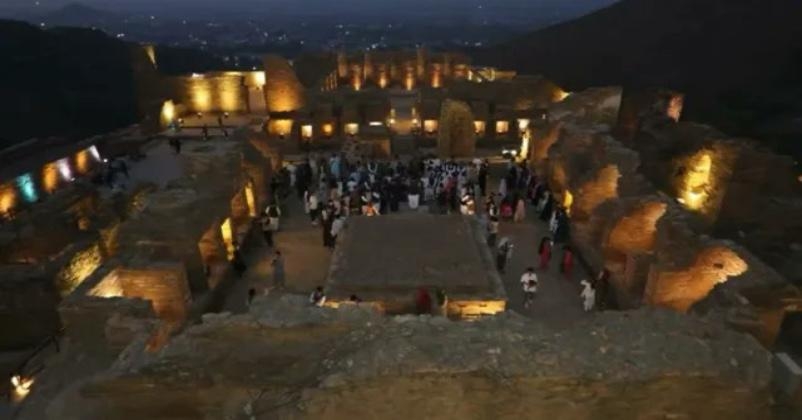1200 Year-Old Vishnu Temple discovered in Pakistan’s Khyber Pakhtunkhwa
09 Nov 2025 14:07:22

Archaeologists have made a major discovery in the Barikot area of Swat, Khyber Pakhtunkhwa province of Pakistan. They have uncovered the remains of a 1200 year-old Hindu Mandir. This Mandir is believed to be dedicated to Bhagwan Vishnu.
The excavation was carried out by Italian archaeologists along with the Khyber Pakhtunkhwa Directorate of Archaeology. This site is one of the eight ancient places found between Swat and Taxila. Experts say that this temple was built during the Hindu Shahi dynasty in the 9th century. At that time, the Hindu Shahi rulers controlled parts of today’s Kabul Valley, Gandhar region, and northwest India.
Dr. Luca, the Director of the Italian Archaeological Mission, said that the team has found clear evidence of a Mandir structure at the spot. The digging work is now being extended toward the Swat River to keep the site safe and protect the underground historical layers.
This work is part of the “Khyber Path Project,” a three-year plan started on June 1. Under this project, many such sites are being studied and the first reports show that this region has been continuously inhabited from prehistoric times up to the Islamic era.
Italian experts say they have identified around 50 ancient sites in different parts of Khyber Pakhtunkhwa. These include places from the Stone Age, the Greek period, Buddhism and the Hindu Shahi dynasty. In Tokardara, near Swat, they have also found Buddhist remains like Buddha statues and a huge stupa, which show that the place was once a centre of worship and a monastery.
It is also important to note that India and Pakistan were once a single country. After the partition in 1947, Pakistan became an Islamic nation. Since then, the number of Hindu temples there has gone down rapidly. In 1947, there were 428 Hindu temples in Pakistan. But by 2025, only around 22 remain. That is why this new discovery of an ancient Mandir holds great historical and cultural significance.